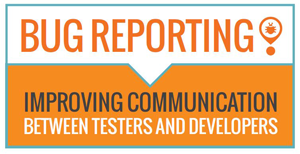Quality assurance testing is all about providing the best product possible. But, how do you know if the money you spent on all that QA testing was worth it? ROI, or return-on-investment, is a concrete way to see if quality assurance testing was worth it in the end. Here, we explain how you can increase ROI with quality assurance testing.
What is ROI?
ROI stands for return-on-investment. It’s a performance measure used to evaluate how profitable a certain investment was.
For example, you will spend a particular amount of money on your quality assurance testing. Your ROI will be the amount of money that you earn after that initial investment. To calculate ROI, divide the benefit (or return) of the investment by the cost, such as below:
ROI = (Net Income ÷ Cost of Investment) x 100
ROI = ($5000 ÷ $4500) x 100
ROI = (1.11) x 100
ROI = 111%
In this particular situation, then, you gained 111% ROI because you made a profit of $500.
ROI and Quality Assurance
Unfortunately, calculating ROI is not always so clear cut. With quality assurance testing, it can be more difficult to determine your ROI because QA testing impacts and is impacted by so much. It can depend on various factors including the scope, complexity, and objectives of your quality assurance testing.
However, you can calculate your ROI a few ways, including cost-benefit analysis, quality metrics, and value stream mapping.
Increasing ROI with QA Testing
So, how can you ensure that your ROI is as high as possible with QA testing? Thankfully, there are multiple ways:
Align Your Objectives with Customer Needs
Your business objectives should always be aligned with what your customers want and need, and that should be communicated clearly to your team members and stakeholders. You have a vision of how your product should operate, but if that vision is not the same as your customers’ visions, then your product will not garner the popularity you are hoping for.
Prioritize Testing Based on Risk
QA testing should be planned and prioritized based on the risk, impact, and value of your product’s features and functions. Otherwise, you could leave your product vulnerable to security risks, bugs, and other issues.
Automate and integrate your QA testing
Automating and integrating your QA testing will help speed up and simplify your workflow. As a result, you’ll be spending less time and money on your QA testing process.
Here at Beta Breakers, we can ensure that the time, money, and effort you spend on your quality assurance testing is worth it. To learn more, contact us today.


 With Experience in Quality Assurance & Testing Desktop Software, Mobile Apps, Websites & Web Applications for Nearly 30 Years, Beta Breakers has become the Premier Software Quality Assurance Labs and Application-Testing Provider -
With Experience in Quality Assurance & Testing Desktop Software, Mobile Apps, Websites & Web Applications for Nearly 30 Years, Beta Breakers has become the Premier Software Quality Assurance Labs and Application-Testing Provider - 


Leave a Reply